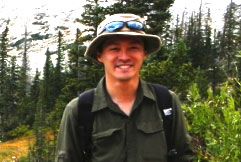Importance of snow water storage in mountains is widely recognized for summer-time irrigation and food production in the downstream states. The process-based modeling of hydrologic systems including snow is an essential and cost effective tool for our resource management and risk analysis. We are aiming to establish a methodology to estimate and predict the snow accumulation, blowing snow, snowdrift, and snowmelt for water resource management at the watershed and regional scales.
Dr. Ohara, the leader of this group, has been working on snow and watershed hydrology modeling for more than fifteen years through national and international research projects. A numerical algorithm for snowmelt and snow accumulation processes for very fine scale modeling (~10m grid resolution) was developed and applied to various watersheds around the world. The model solves the depth-averaged snow equations for snow depth, snow surface temperature, and snow density, with consideration of vegetation interception and terrain angles. His model is a snow component of an award-winning, Watershed Environmental Hydrology (WEHY) model.
Due to strong wind of Wyoming, snow transport process often dominates snow distributions. We have been working on snow redistribution modeling (Ohara, 2014; He et al., 2017). Recent publication on snow drift prediction (Ohara, 2017) was featured in Water Resources Research (WRR) in a commentary article titled, Modeling blowing snow accumulation downwind of an obstruction: The Ohara Eulerian particle distribution equation, by Dr. N. J. Kinar.
He has been operating mesoscale numerical weather prediction models, such as the PSU/NCAR mesoscale model (MM5) and Weather Research and Forecasting (WRF) model. They can produce the regional scale atmospheric conditions by dynamically downscaling atmospheric reanalysis data, global forecasting data, and General Circulation Model (GCM) outputs. He was a key researcher for a new estimation methodology of the physical maximum precipitation and flood using a numerical weather prediction model. He has been a user of high performance computing (HPC) resources around the University of Wyoming, including the NCAR-Wyoming Center, and the UW on-campus cluster.



